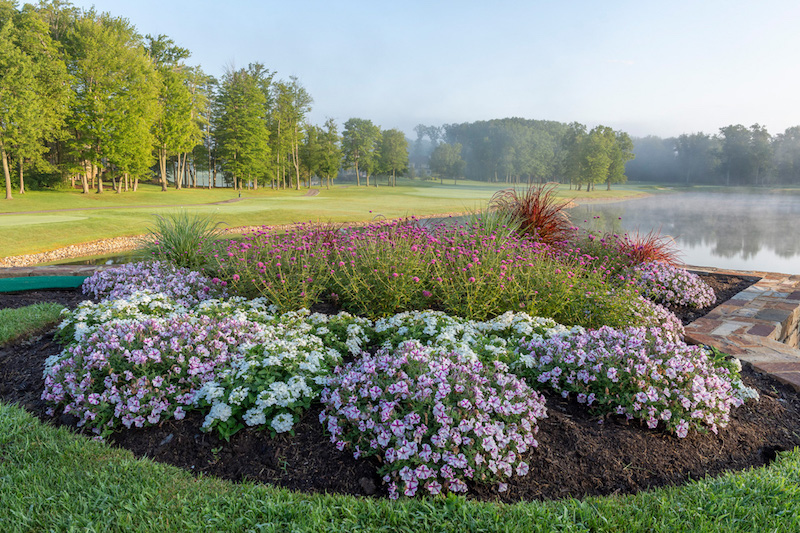About Hilton Head Landscapes
About Hilton Head Landscapes
Blog Article
See This Report about Hilton Head Landscapes
Table of Contents10 Simple Techniques For Hilton Head LandscapesThe Basic Principles Of Hilton Head Landscapes Top Guidelines Of Hilton Head LandscapesWhat Does Hilton Head Landscapes Do?Hilton Head Landscapes Things To Know Before You BuyLittle Known Questions About Hilton Head Landscapes.What Does Hilton Head Landscapes Do?
Line produces all kinds and patterns and can be utilized in a range of means in the landscape. Line in the landscape is created by the side between two products, the outline or silhouette of a kind, or a long linear attribute. Lines are an effective device for the designer due to the fact that they can be utilized to produce an infinite range of shapes and kinds, and they manage movement of the eye and the body.

Lines can have several characteristics, such as those defined listed below, but they typically serve various objectives. Number 1. Lines in the landscape - Landscapers near me. The homes of lines identify exactly how individuals reply to the landscape, both mentally and physically. Straight lines are structural and powerful; they develop an official personality, are generally associated with a symmetrical style, and lead the eye directly to a centerpiece.
Hilton Head Landscapes Things To Know Before You Get This
Rounded lines create an informal, all-natural, kicked back character that is associated more with nature and asymmetrical balance. Bent lines relocate the eye at a slower pace and include secret to the room by producing covert sights.
Upright lines in the landscape consist of tall, narrow plant material, such as trees, or tall structures, such as an arbor or a bird house on a post. Straight lines move the eye along the ground airplane and can make a space really feel bigger. Low lines are more subdued and develop a sensation of rest or repose.
The Greatest Guide To Hilton Head Landscapes
Lines are additionally developed by the vertical kinds of developed attributes and plant material. There are three key line kinds that produce kind in the landscape: bedlines, hardscape lines, and plant lines.
Bedlines connect plant product to your house and hardscape due to the fact that the eye complies with the line, relocating the look via the landscape. Hardscape lines are created by the edge of the hardscape, which defines the constructed structure. Line can likewise be created by lengthy and slim products, such as a fencing or wall.
A Biased View of Hilton Head Landscapes
Form is found in both hardscape and plants, and it is generally the dominant visual aspect that spatially organizes the landscape and commonly establishes the style of the garden. The type of structures, plant beds, and garden accessories also determines the overall kind style of the garden. Formal, geometric kinds consist of circles, squares, and polygons.
Plants develop form in the garden via their describes or silhouettes, yet kind can likewise be specified by a void or negative area in between plants - landscapers hilton head island (https://www.storeboard.com/hiltonheadlandscapes). Circles can be cycles, or they can be split into half circles or circle sectors and combined with lines to develop arcs and tangents
The Definitive Guide for Hilton Head Landscapes
Circles can likewise be stretched right into ovals and ellipses for more range and interest. Circles are a strong layout type since the eye is always attracted to the center, which can be made use of to emphasize a focal factor or connect various other forms. Number 2. Round forms in hardscape and grass panels.
The square type can likewise be fractional and pre-owned repetitively to develop a grid pattern. Unlike circles, squares are more powerful on the edges, which can be aligned or overlapped to develop one-of-a-kind patterns and more complex types. Polygons are many-sided types with straight edges. Triangulars, for example, are three-sided polygons.
Meandering lines frequently mimic the natural training course of rivers or streams and can be called smooth lines with deeply bent wavinesses. Twisting lines (Number 3) work well for pathways, plant bedlines, and dry stream beds. Meandering lines can add rate of interest and secret to a yard by leading visitors around corners to discover new views and spaces.
The Greatest Guide To Hilton Head Landscapes

Usual plant types are well established and standardized, as kind is the most consistent and recognizable characteristic of plants. Type can also be produced with the massing of plants, where the overall mass produces a different form than a private plant.
A highly contrasting form must be made use of with careone or 2 work well as a prime focus, yet way too many wreak havoc. All-natural plant kinds, instead of over-trimmed types, need to establish the bulk of the structure. The relevance of overall form is basically based on the watching perspectivethe type of a tree can appear fairly different to an individual standing under the cover versus checking out the tree from a range in an open field.
How Hilton Head Landscapes can Save You Time, Stress, and Money.
Plant kinds likewise create and specify deep space or open rooms between the plants, developing either convex or concave kinds in deep spaces. High-arching tree branches commonly create a concave open area under the branches, and a rounded canopy with low branches fills up the space to develop a convex kind in the open room under the tree.

Report this page